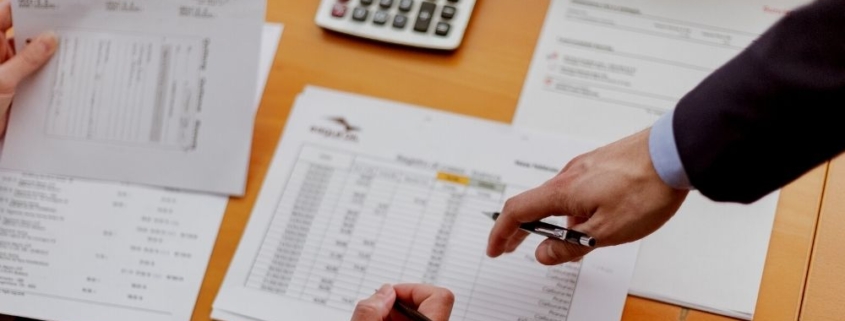GST for Other Health Services
GST for other health services is outlined in s38-10 GST Act. It is one of five GST exemptions.
GST for Other Health Services
The confusion starts with the word ‘Allied Health’ itself. There is no universally accepted definition. And hence the GST Act doesn’t give you a universal exemption either, but instead gives you a lot of if’s and when’s.
This is an old article – click here for the up-to-date version and here for more articles about GST for Health Professionals.
Subdiv 38-B
Allied health services are GST-free if they meet one of five possible exemptions in Subdiv 38-B A New Tax System (Goods and Services Tax) Act 1999 – in short GST Act. Think of them as five doors. You only need to fit through one.
1 – Hospital (s38-20)
2 – Aged care (residential care (s38-25), home care (s38-30) or flexible care (s38-35))
3 – Disability (disability support provided to NDIS participants (s38-38) or specialist disability services (s38-40))
4 – Medical services and (s38-7) including Medicare
5 – Other health services (s38-10)
Most relevant for allied health workers are three exemptions: NDIS, Medicare and other health services. Let’s cover NDIS and Medicare in the next article and focus on ‘other health services’.
Other Health Services
Other health services are GST-free under s38-10 GST Act if they meet the following four conditions.
Condition # 1 – In The Table
s38-10 GST Act: (1) A supply is GST-free if: (a) it is a service of a kind specified in the table…
The Table…..Your service must be listed in the table of s38-10 (1). If it is not, s38-10 is not for you – try a different exemption. Here is The Table – the 21 ‘other health services’
# 1 Aboriginal or Torres Strait Islander Health, # 2 Acupuncture, # 3 Audiology and audiometry, # 4 Chiropody, # 5 Chiropractic, # 6 Dental, # 7 Dietary, # 8 Herbal medicine (including traditional Chinese herbal medicine), # 9 Naturopathy, # 10 Nursing, # 11 Occupational therapy, # 12 Optometry, # 13 Osteopathy, # 14 Paramedical, # 15 Pharmacy, # 16 Psychology, # 17 Physiotherapy, # 18 Podiatry, # 19 Speech pathology, # 20 Speech therapy and # 21 Social work
Condition # 2 – Recognised Professional
s38-10 GST Act: (b) the supplier is a recognised professional in relation to the supply of services of that kind….
Are you a ‘recognised professional’ as defined in the GST Act? The answer is complicated because there is not just one allied health registration. Each allied health profession is different. Some have compulsory registration by law, eg. psychologists. Some have compulsory registration set by their professional body in an attempt to self-regulate the profession, eg. speech pathologists. And others have voluntary registration either in Australia or overseas, eg. behavioural therapists.
So it all depends on whether you need to be registered – by law or by your professional governing body. If you do and you are, you are a recognised professional as per s195 – 1 GST Act.
s195 – 1 GST Act
This is probably too much detail, so briefly just in case it matters. Here is the actual wording of s195-1.
(a) covers mandatory registration by law:
“a person is a recognised professional,…if: (a) the service is supplied in a State or Territory in which the person has a permission or approval, or is registered, under a State law or a Territory law prohibiting the supply of services of that kind without such permission, approval or registration” Think of a psychologist. To practice they must register with the Psychology Board of Australia, which is part of AHPRA (Australian Health Practitioner Regulation Agency). So a registered psychologist qualifies as a recognised professional.
And (b) covers mandatory registration as per the profession’s governing body:
“(b) the service is supplied in a State or Territory in which there is no State law or Territory law requiring such permission, approval or registration, and the person is a member of a professional association that has uniform national registration requirements relating to the supply of services of that kind. Think of a speech pathologist. You must register with Speech Pathology Australia to practice. So a registered speech pathologist would qualify as a recognised professional.
But…if registration is voluntary or overseas, for example for behavioural therapists, then there is no ‘recognised professional’ as per s195-1 GST Act. However, you can still qualify through one of the other exemptions, notable the NDIS exemption.
Condition # 3 – Accepted as Being Necessary
s38-10 GST Act: (c) the supply would generally be accepted, in the profession associated with supplying services of that kind, as being necessary for the appropriate treatment of the recipient of the supply.
The GST Act doesn’t define the term ‘appropriate treatment’. But there is a legally binding public ruling in which the Commissioner defines the term.
10. …’appropriate treatment’ will be established where the recognised professional assesses the recipient’s state of health and determines a process to pursue, in an attempt to preserve, restore or improve the physical or psychological wellbeing of that recipient insofar as that recognised professional’s particular area of training allows and will include subsequent supplies for the determined process.
Sounds nebulous but if your treatment plan ‘fits the crime’, then you should be fine. This condition rarely is an issue.
Condition # 4 – Recipient of Supply
The person receiving the treatment must be the one paying for it. If that is the case – e.g. privately paid treatments – all good. If this is not the case, then you have an issue of supply.
Issue of Supply
There are two common issues of supply. You have an issue of supply if somebody else – not the patient – pays for the treatment. And you have an issue of supply if somebody else – not you – provides the treatment.
1 – Somebody else pays for the treatment
If a third-party – e.g. Medicare, NDIS, private health insurance or workers compensation – pays for the treatment, then they receive your supply. But they are not sick, so they are not receiving an allied health service. So at face value your supply would not be a necesary treatment.
However, there is s38-60. If a health service would have been GST-free under Subdiv 38-B apart from the issue of supply, then s38-60 can fix this for three types of schemes: Private health insurance s38-60 (1), compulsory third party schemes like workers comp s38-60 (2) and governement agencies like Medicare and NDIS s38-60 (3). But s38-60 only applies to services that would already be GST-free if it wasn’t for the issue of supply.
2 – Somebody else provides the treatment
If you are the one collecting payment but you are not the one actually providing the treatment because you engage contractors, then you also have an issue of supply. So your contractors have to charge you GST, because you are receiving a service from them that is not an allied health service. However, if you are registered for GST, you can claim that GST right back. So it doesn’t really affect you.
If employees provide the service on your behalf, then no issue of supply.
Summary
So all up, other health services is one of five possible GST exemptions for allied health. You qualify under s38-10 if you are ‘in the table’, a ‘recognised professional’, your treatment fits the norma and you have dealt with the issue of supply. If you tick these four boxes, your supply is GST exempt.
MORE
Small Business CGT Concessions
Disclaimer: numba does not provide specific financial or tax advice in this article. All information on this website is of a general nature only. It might no longer be up to date or correct. You should contact us directly or seek other accredited tax advice when considering whether the information is suitable to your circumstances.
Liability limited by a scheme approved under Professional Standards Legislation.










